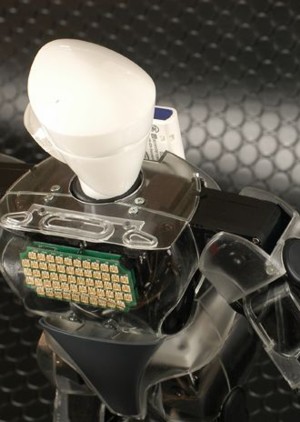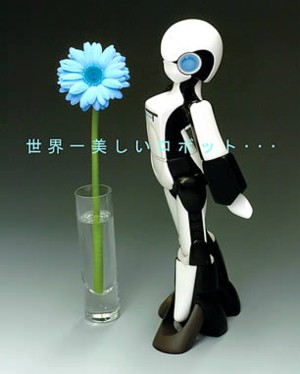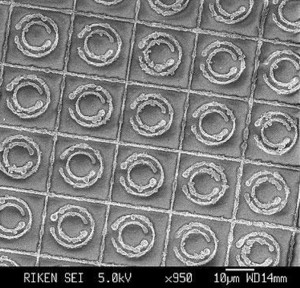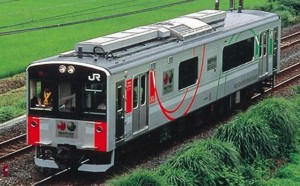 Robot developer Speecys Corporation has unveiled its ITR ("Internet Renaissance") robot, a compact droid capable of downloading Internet content via wireless LAN. The company announced plans to begin selling developer evaluation kits (limited to 300 sets) to content developers at the end of May. The consumer version of ITR is scheduled to hit shelves at the beginning of September with a price tag of 190,000 yen (US$1,600).
Robot developer Speecys Corporation has unveiled its ITR ("Internet Renaissance") robot, a compact droid capable of downloading Internet content via wireless LAN. The company announced plans to begin selling developer evaluation kits (limited to 300 sets) to content developers at the end of May. The consumer version of ITR is scheduled to hit shelves at the beginning of September with a price tag of 190,000 yen (US$1,600).
ITR, which Speecys is billing as the world's first humanoid robot to be integrated into the family, connects to a dedicated server via the Internet to download "robot content" that it presents to the user with its voice and movements. ITR uses Speecys' own Robot Transaction Markup Language (RTML) as a protocol, and the company appears to be moving forward with plans to establish RTML as the standard protocol for robot communication. With an adaptor, the IEEE 802.11g compatible bot will be able to download content from a mobile phone web browser.
Initial plans call for 12 channels of content ranging from news and weather to children's programming, variety and music programs. Features such as a "motion browser" and a library function for storing emotional expression motion data enable ITR to use sound and motion to communicate the content to the user.
ITR's hardware includes an RPU-50 CPU manufactured by Futaba Corporation, Speecys' own NetBSD-based OS (Speecys OS Rev. 2.0), and Futaba's RS301CR servo motors. ITR is outfitted with a pair of speakers and a total of 168 LEDs in its chest and hands. The robot is powered by a built-in rechargeable lithium polymer battery, and is equipped with USB and serial ports, a Mini SD slot and audio connection port. ITR is 30 cm (12 inches) tall and weighs 1.5 kg (3.3 lbs).
With dreams of seeing ITR enjoy widespread adoption in the general household, Speecys hopes ITR will follow in the footsteps of radio, TV, PC, and mobile phone to become the fifth major form of household media.
[Source: Impress Watch]
 On April 7, Robo Garage, a venture company of Kyoto University, unveiled a slender and agile biped female robot.
On April 7, Robo Garage, a venture company of Kyoto University, unveiled a slender and agile biped female robot.
 When light passes through material such as glass, a portion of its energy is lost as it reflects off the material's surface. Researchers at Japan's Institute of Physical and Chemical Research (
When light passes through material such as glass, a portion of its energy is lost as it reflects off the material's surface. Researchers at Japan's Institute of Physical and Chemical Research ( On April 4, the
On April 4, the  Robot developer
Robot developer  An assortment of model "safe" homes shaped like soccer balls are on display at a home exhibition in suburban Gifu. The homes -- named "Barier" by manufacturer
An assortment of model "safe" homes shaped like soccer balls are on display at a home exhibition in suburban Gifu. The homes -- named "Barier" by manufacturer